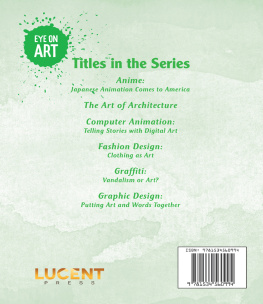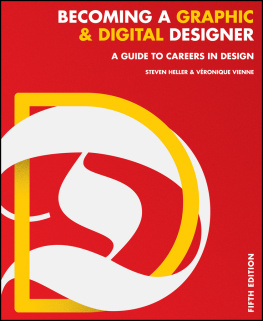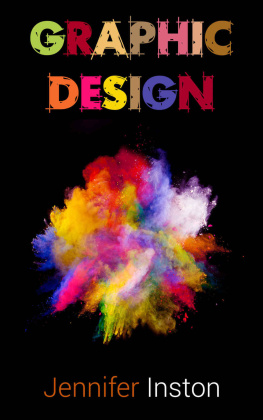Copyright 2012 by John Wiley & Sons, Inc. All rights reserved
Published by John Wiley & Sons, Inc., Hoboken, New Jersey
Published simultaneously in Canada
No part of this publication may be reproduced, stored in a retrieval system, or transmitted in any form or by any means, electronic, mechanical, photocopying, recording, scanning, or otherwise, except as permitted under Section 107 or 108 of the 1976 United States Copyright Act, without either the prior written permission of the Publisher, or authorization through payment of the appropriate per-copy fee to the Copyright Clearance Center, 222 Rosewood Drive, Danvers, MA 01923, (978) 750-8400, fax (978) 646-8600, or on the web at www.copyright.com. Requests to the Publisher for permission should be addressed to the Permissions Department, John Wiley & Sons, Inc., 111 River Street, Hoboken, NJ 07030, (201) 748-6011, fax (201) 748-6008, or online at www.wiley.com/go/permissions.
Limit of Liability/Disclaimer of Warranty: While the publisher and the author have used their best efforts in preparing this book, they make no representations or warranties with respect to the accuracy or completeness of the contents of this book and specifically disclaim any implied warranties of merchantability or fitness for a particular purpose. No warranty may be created or extended by sales representatives or written sales materials. The advice and strategies contained herein may not be suitable for your situation. You should consult with a professional where appropriate. Neither the publisher nor the author shall be liable for any loss of profit or any other commercial damages, including but not limited to special, incidental, consequential, or other damages.
For general information about our other products and services, please contact our Customer Care Department within the United States at (800) 762-2974, outside the United States at (317) 572-3993 or fax (317) 572-4002.
Wiley also publishes its books in a variety of electronic formats. Some content that appears in print may not be available in electronic books. For more information about Wiley products, visit our web site at www.wiley.com.
Library of Congress Cataloging-in-Publication Data:
Meggs, Philip B.
Meggs history of graphic design / Philip B. Meggs, Alston W. Purvis. 5th ed.
p. cm.
Rev. ed. of: A history of graphic design. c1998.
Includes bibliographical references and index.
ISBN 978-0-470-16873-8 (cloth/website); ISBN 978-1-118-01718-0 (ebk.); ISBN 978-1-118-01719-7 (ebk.); ISBN 978-1-118-01774-6 (ebk.); ISBN 978-1-118-01775-3 (ebk.); ISBN 978-1-118-01776-0 (ebk.)
1. Graphic design (Typography)History. 2. Book designHistory. I. Purvis, Alston W., 1943- II. Meggs, Philip B. History of graphic design. III. Title. IV. Title: History of graphic design.
Z246.M43 2012
686.2209dc22
2010053089
Contents
HOW TO USE THIS EBOOK
Welcome to the first digital version of Meggs History of Graphic Design. Now you have on-the-go, ready access to this comprehensive reference. Reading an ebook is a little different than reading a print edition; accordingly, we have made some adjustments to the presentation of this books content, so as to enhance your experience and take best advantage of the capabilities of your particular e-reader.
To help you navigate, beyond the usual opening table of contents, at the beginning of each chapter you are presented with two options: to Read the text or View, successively, the corresponding images. Whichever option you initially choose, you then have multiple ways to switch from one to the other. For example, each subject heading in the chapter text (that is, in Read) is linked to the set of images discussed under that heading. And each numbered figure reference in the text that is hyperlinked (for example, fig. 16-3 ) is linked directly to that image. Similarly, in View, each hyperlinked subject heading that appears above an image (for example, Design in Basel and Zurich ) is linked to that heading in the text, and the hyperlinked figure number that begins each figure caption is linked to the primary discussion of that figure in the text.
In addition, there is the familiar subject index. Each listed item is a key term, every instance of which can be easily located using the search tool on your device.
Each e-reader and mobile device has its own format and functions for navigation and customization. Please consult the user manuals on your devices to best understand how to take advantage of these functions and take some time to test different font sizes and types to see what works best for you. For optimized use of linking between text figure call-outs and images, you may find it helpful to reduce the font size while using certain devices.
Enjoy!
Wiley Architecture & Design ebook Team
Preface
Many different methods can be employed to investigate the evolution of graphic design, including exploring aesthetic movements and ideas, considering economic implications, analyzing audience sensibility, and evaluating the influence of technological innovations such as the invention of movable type or lithography. Naturally, the visual nature of graphic design is our primary concern, but we must also consider the values of the designers, the impact of their work on audiences, and the intrinsic meaning of forms. Traditional art history research approaches are in many ways insufficient for addressing the relatively recent and completely unique history of graphic design. Concentrating only on individual designers and their most important works or placing these designers systematically into schools or overall movements does not adequately fulfill our needs. Invigorating exchanges among designers is crucial impetus to the growth of graphic design, and, because of the Internet, this impetus is particularly relevant to graphic design today.
My own preferences and those of Philip B. Meggs undoubtedly played a role in determining what or whom to include in this edition, but a decided effort was made to arrive at such decisions for reasons other than personal tastes. Ideally, choices were based on how clearly designs impart ideas, aesthetic concepts, or specific graphic forms, even when other examples might be deemed more standard. Obstructions in acquiring publication rights to image reproductions in this edition were also an impediment to the inclusion of certain works of art. For this reason, some significant figures have unfortunately been denied their rightful place in this book and will most likely be denied inclusion in other publications as well.
Although in the history of graphic design, there are moments when shared visions defy any attribution to a single designer, there have also been individual designers forging new paths, with distinctive expressive forms and original means for conveying information. A goal of Meggs History of Graphic Design has been to document graphic design innovation and those designers who have made noteworthy contributions to its long-term development. Selecting exceptionally significant designers, especially from the last thirty years, was a demanding undertaking. By significant I refer to those who not only created outstanding work but also played a major role in the growth of the graphic design profession. What characterizes a master designer is not easy to define. Such individuals should first possess a unique aesthetic vision, a directly identifiable visual language, and a philosophy that goes beyond mere problem solving. Clearly, many have been unfairly omitted, but there has been a conscious effort to prevent such exclusions. The inventive accomplishments of past great graphic design practitioners have withstood the test of time and continue to inform and inspire new generations. Assessing graphic design from recent years, however, is a more delicate and complicated task, as there is now a far more level playing field. The boundaries between diverse design disciplines have also become less distinct. Provenance has become more complex as well. Particularly during the last century, many designers created publications in companies with rotating staffs and interns. Such designs are the products of many individuals, and acknowledging all of those involved is rarely a viable option.








